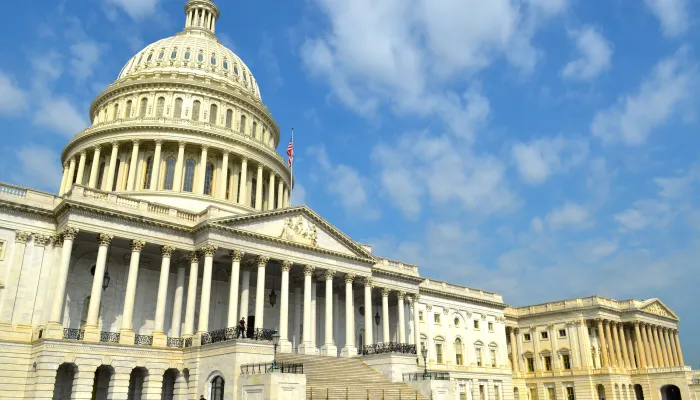Pell Grant Program Is In Serious Trouble
The Pell Grants program is now expected to run out of reserves by the end of this year and is expected to face a $71 billion to $111 billion ten-year shortfall, based on new data from the Congressional Budget Office (CBO).
Last year we estimated that the Pell Grant program would run out of reserves in 2027, but higher than expected costs have expanded the program’s annual deficits and have depleted the reserves that had been built up. CBO projects these higher costs to carry into the future. Using data from CBO, we estimate:
- The Pell Grant program will run out of reserves in 2025.
- Pell Grant costs will exceed appropriations every year over the next decade, leading to a cumulative shortfall of at least $71 billion.
- Under reasonable alternative scenarios, the Pell Grant program could face a cumulative ten-year shortfall of up to $111 billion.
Given these massive shortfalls, policymakers should be focused on decreasing costs in the program and/or boosting funding (with appropriate offsets) to shore it up. They should also abandon any ideas of expanding further eligibility or increasing awards in the program at this point.
The Pell Grant Reserves Face Imminent Depletion
CBO now finds the Pell Grant program ended up costing $31.5 billion in Fiscal Year 2024, $7 billion (29 percent) greater than CBO estimated last year. Issues with enrollment caused by the botched rollout of the new FAFSA combined with changes to the underlying formula awarding the grants has made predicting Pell enrollment difficult. Now that the picture is clearer, the expected cushion of reserves is gone due to higher costs. CBO now projects program costs of $32 billion for 2025, a 22 percent increase from two years ago.
As a result of these higher costs, the program’s reserves fell to $3.6 billion by the end of last year and funding is expected to fully run out this year, in Fiscal Year 2025. Without additional appropriations, CBO now expects a $3 billion shortfall by the end of 2025.

The Pell Grant Shortfall is Large
Assuming that Congress grows appropriations to the Pell program by inflation each year (which is a typical assumption for discretionary funding in general) and holds the maximum award flat, the program faces a cumulative projected shortfall of $71 billion over ten years.1
If funding remained flat at current levels, that shortfall would grow to $98 billion. And if funding grew with inflation but so too did the maximum award (historically it has increased by at least that much), the shortfall would grow to $111 billion.

Specifically, even if Congress grows appropriations with inflation but does not increase the maximum award, the program would face an annual shortfall of $7 billion in 2026 that slowly decreases to $5.5 billion by 2035.2
If Congress were to not increase appropriations from 2026 at all, the annual shortfall would be $7.5 billion in 2026, growing to $10.5 billion in 2035. And if Congress were to increase funding by inflation from 2026 expected funding levels and also increase the maximum Pell Grant by inflation, the annual shortfall would be $8 billion in 2026 growing to $13 billion in 2035.
These shortfalls would represent 21 to 30 percent of the program’s ten-year costs and 27 to 42 percent of its projected funding.
Policymakers Should Shore Up the Pell Grant Program
With a $71 to $111 billion gap between projected Pell Grant costs and resources, significant adjustments will need to be made to boost funding and/or reduce costs. Savings could come from tightening eligibility based on income or enrollment status, limiting how Pell Grants can be used, or reducing award amounts for some or all recipients. In 2020, Congress increased access and award amounts via a bipartisan change to the student aid formula but did not adequately increase funding. Now difficult decisions need to be made.
For example, recent CBO estimates find that restricting the Pell Grant to only students who qualify for the maximum award (the students with the most need) would reduce the Pell shortfall by $25 billion over ten years (and produce an additional $10 billion of mandatory savings), as shown in our recent Budget Offsets Bank. Some other options include expanding Gainful Employment (GE) rules that limit awards for those at low-performing institutions, limiting grant renewals for low-performing students, tightening means testing of Pell awards, or limiting the full award to students taking at least 15 credit hours. Lawmakers could also reduce spending on the mandatory portion of Pell (full repeal would save $50 billion) and divert some of the funds to help support the discretionary program.
Congress certainly should not add to Pell costs – for example by repealing the GE rule or by expanding Pell to short-term programs.
A Coming Reckoning
Pell is only allowed to be in shortfall for one year before the awarded amount is automatically cut in order to reduce the cumulative shortfall to zero. Without quick action, the Pell Grant program will see significant cuts in benefits.
To avoid steep cuts to recipients, Congress now has an opportunity to reexamine priorities and whether there are better ways to target the program as part of the broader discussion of higher education reforms, including in reconciliation. Congress should work to better target funds in the program and – to the extent costs remain above current funding levels – boost appropriations in a fiscally responsible way. There are plenty of offsets available, including by reforming student loans, higher education tax credits, and other spending.
1We assume no changes to mandatory funding.
2If funding were based on inflation starting from the 2024 base appropriations, that would lead to an additional $5 billion in funding available over the 10-year period.


